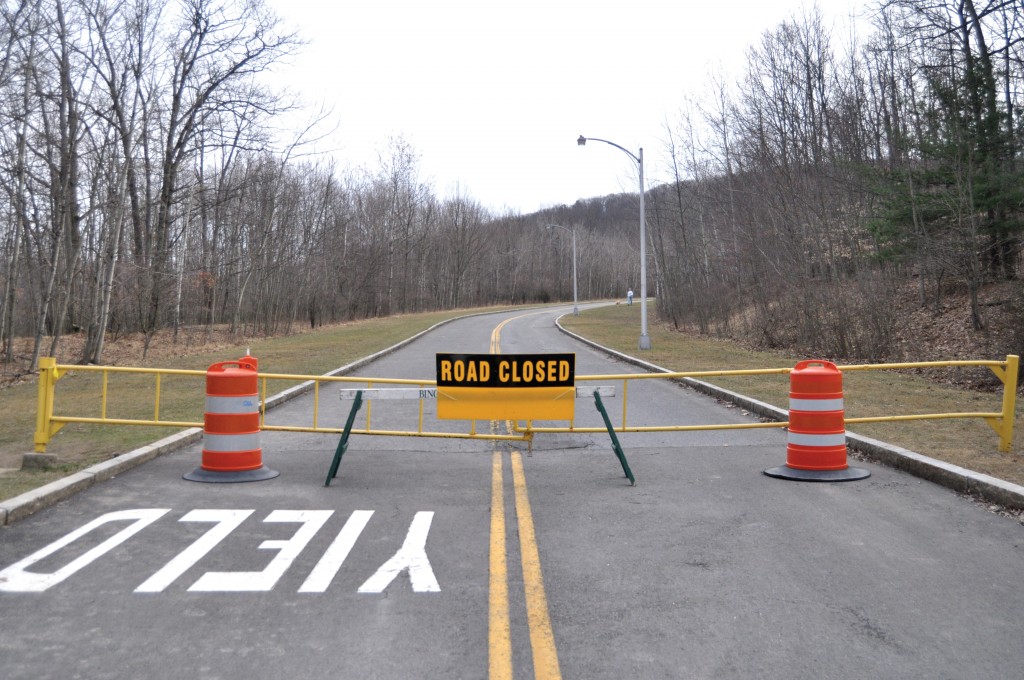
Why did the salamander cross the road?
Connector Road, which links Mountainview College with East Campus, is the annual path for yellow-spotted salamanders to reach their mating grounds in Harpur Pond in the Nature Preserve, according to Richard Andrus, a professor of environmental studies and biological sciences.
Campus rumor has it that the road is specifically closed for the salamander migration, but the amphibious travelers are only one reason for closing Connector Road in the winter months. The road is closed to cut down on plowing costs and is left clear into the spring to ensure the safe passage of the salamanders, according to Dylan Horvath, steward of Natural Areas at Binghamton University.
Andrus said the weather was perfect for the migration, though it typically occurs later in the year. This year, the migration occurred in the late winter.
“It takes place on the first warm, rainy day of the spring,” Andrus said.
However, only about six yellow-spotted salamanders crossed the road last week after a cold wind ended the migration for the night.
“We had a small number of salamanders cross the road last night [March 8],” Horvath wrote in an email to Pipe Dream. “One lonely male at 7:20 and then about half dozen by 8:30. The cold front arrived with cold blowing wind and as soon I as got done calling people to come watch, the migration ended.”
Physical Facilities has taken steps to encourage the salamander’s movement by closing down Connector Road during this time. According to Physical Facilities spokeswoman Karen Fennie, the road is reopened only after Horvath informs her office that the salamanders have completed their annual migration.
Physical Facilities also introduced ramps from the road to the curbs in 1978 to assist the salamanders that could not climb the curbs, according to Fennie.
Horvath explained the biological motives behind the migration.
“It’s that time of year, their mating season,” Horvath said. “They do their courting in the water. They were having trouble climbing the curb, especially the females, who are full of eggs and very heavy and can’t really climb.”
The closing of Connector Road is an inconvenience for some students, like Ian Gray, a sophomore majoring in finance.
“I have no idea why they close it, and it makes things a little more difficult in terms of traffic on the main road,” Gray said.
About a dozen students ventured out to see the salamanders cross the road last Thursday.
Tomas Quezada, a junior double-majoring in biology and environmental studies, witnessed the migration for the first time.
“I’m here out of interest,” Quezada said. “I want to become a herpetologist researcher. Once in every year it happens and it’s a pretty interesting thing, a bunch of salamanders getting together for one goal.”
For some students, like Sarah Lister, a senior also double-majoring in biology and environmental studies, observing the salamander migration has become an annual tradition.
“I came out here because this is one of the only times of the year that you can see the salamanders because they live underground most of the year,” Lister said.
The migration will likely continue into this week, according to Horvath, but there is no knowing when the salamanders will be making their return trip.
“Coming back is a mystery,” Horvath said. “They don’t come back en masse like they do when they go out. And so some of them may return in the same night, some of them might return weeks later, some of them may stay the whole summer.”
This spring, students can also look out for wood frogs, spotted salamanders and spring peepers, among hundreds of other species of wildlife in the Nature Preserve.


